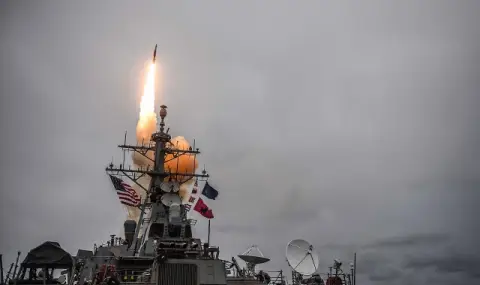Phosphorus and cluster bombs, uranium shells, chloropicrin and other banned or at least disputed weapons are apparently also used in the war in Ukraine. What information is there about the two warring parties.
Chloropicrin is a poisonous oily liquid with an extremely strong odor. If people come into contact with this substance, it can cause skin blisters, eye irritation and breathing difficulties. It is particularly dangerous that when inhaled, the vapors affect the blood vessels in the lungs. The consequences: pulmonary edema with wheezing and foamy reddish sputum, which in the worst case can lead to death.
The effect of chlorpicrin has been known since the First World War. It was originally developed as a pesticide, but then the Russian military turned it into a combat poison. The German army also used it from 1916 onwards in gas grenades on the French front.
Chemical weapons in Ukraine?
Today, more than a century later, the Russian military has apparently used it again – or at least such reprimands are being made by the US State Department. Russian units are also believed to be using other combat poisons. According to the Pentagon, the goal is to push Ukrainian troops out of their positions so that Russia can achieve tactical successes on the battlefield.
If the reports of the use of combat poisons are confirmed, it would mean that Moscow is violating the international Convention on Chemical Weapons. It has been in force since 1977 and prohibits the development, production, stockpiling and use of chemical weapons. It also stipulates that all existing chemical weapons arsenals must be declared and destroyed under international supervision by 2012. However, this has not happened, as has become clear from the war in Syria, where in 2018 the army of dictator Bashar al-Assad launched a poison gas attack in a suburb of Damascus.
Russia once possessed the largest arsenal of chemical weapons in the world, but is among the signatories to the Convention. In 2017, the Organization for the Prohibition of Chemical Weapons confirmed that all Russian chemical weapons had been destroyed in the meantime. The Kremlin, for its part, immediately rejected allegations of the use of such weapons in Ukraine. But as was seen from the attempts on Sergei Skripal and Alexei Navalny, chemical weapons clearly still exist in Russia and are being used.
Cluster bombs from the Russian and Ukrainian side
However, it is unequivocally documented that cluster bombs have been used many times since the beginning of the war in Ukraine. According to “Human Rights Watch” Russian troops have used at least six types of such bombs. They were also applied in the last days during the attack on Odessa.
The Ukrainian side also uses such bombs. In July 2023, US President Joe Biden authorized their delivery to Kiev. These bombs detonate in the air and break up into hundreds of smaller bombs that travel a long distance and do not explode at the same time. Because of this, they can pose a mortal danger even years later. Cluster bombs are also banned under a 2010 agreement. But it was not signed by either the USA, Russia or Ukraine.
Mass use of mines in Ukraine
Ukraine is the most mined country in the world – in the meantime, millions of explosives have been buried on its territory. For a year now, the conflict in the eastern part of the country has turned into a positional war. The front has barely moved during this time. To strengthen their defensive positions, both sides rely on anti-tank and anti-transport mines, which are located in wide belts on both sides of the front.
In order to make it difficult to clear them, anti-personnel mines are also used in the meantime – which, however, have also been banned since 1997. Ukraine has joined the treaty signed by 163 other countries, but Russia has not.
The explosion of the "Kakhovka" dam east of Kherson in the summer of 2023 had particularly dramatic consequences. The overflowing masses of water dug up and dragged away countless mines. But it is not known what their number is and where exactly they are today.
Phosphorus bombs against Mariupol and Bakhmut?
Phosphorus bombs contain white phosphorus and a mixture of crude gasoline and rubber, and are also used as incendiary bombs. In contact with air, they self-detonate and develop a temperature of up to 1300 degrees. The explosion of a phosphorus bomb releases hundreds of burning balls, and even a small amount of them can cause the most severe burns, and the fumes of white phosphorus are highly poisonous.
According to the Geneva Convention, the use of phosphorus bombs against civilians and settlements is prohibited – but not in general. Ukraine accuses the Russian army of using phosphorus bombs in the fighting for the metallurgical plant “Azovstal” in Mariupol, as well as in Bakhmut. Moscow denies.
But in the past, Ukraine also asked the countries that support it, supplies of phosphorus bombs for the defense of the country – but without having received them.
Uranium projectiles for Kyiv?
The US has supplied Ukraine with armor-piercing uranium projectiles. These are uranium-enriched projectiles that can penetrate tank armor. The uranium dust that got inside the tank ignited on contact with the air and thus set the entire driver's cabin on fire. There is no international convention banning uranium projectiles.
However, experts warn of lasting health consequences from the weakly radioactive uranium dust. During the Iraq War in 2003, hundreds of tons of uranium projectiles were fired. There, as stated in a report by the organization “International Physicians for the Prevention of Nuclear War”, in the regions that have suffered particularly much from the uranium projectiles, there has been a significant increase in malformations, cancers and other disabilities. However, the World Health Organization and the IAEA have not yet confirmed the existence of an increased risk to the civilian population.
